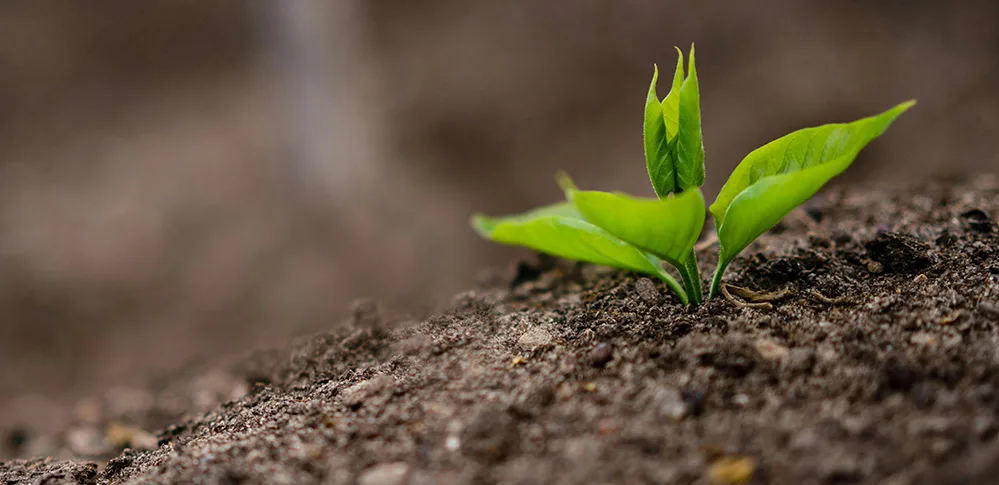Gardening and Grief

How long can one stand in the darkness of grief? You stand there until you recognize your pain, put a name on it, and decide you can’t endure it any longer. You rise. Then, you take one step forward and then another until you stand in the light.
It is spring. The days are getting longer—more light. However, I have a love-hate relationship with this time of year. My son, the source of my greatest joy, was born in April. Sadly, he is also the source of my greatest sorrow. He died in a tragic motor vehicle accident just a few days shy of his 23rd birthday. What gets me through the season? Gardening.
What Makes Creating a Garden So Therapeutic?
A day spent in the yard is typically hard work that involves getting sweaty and now (at my age) a little achy. What is so great about clearing weeds or, worse, picking off icky intrusive insects and dropping them into a glass of soapy water?
Why do I dig my hands into the dirt rather than a soothing soak at the salon, followed by choosing a trendy shade of nail color?
Engaging with nature holds a profound healing power for my grief. Like cooking and baking, gardening combines science, art, and magical elements. The yield is a sensory feast for sight, scent, and taste. Each instance of a seed sprouting into a beautifully fragrant flower or a delectable ingredient igniting culinary inspiration is a marvel.
The garden is a personal pantry, surpassing any grocery store’s superior freshness and fragrance. Harvesting dinner straight from the soil, despite the effort of scrubbing dirt from beneath my unpolished nails, is undeniably rewarding.
The garden also brings me back to simpler times with my kids. The lure of the internet and video games wasn’t there for them. Playing in the dirt or the woods is where they’d be.
Today, as I see my daughter designing her garden and planting seeds, I am ever so grateful that she continues to find comfort in the beauty only Mother Nature can give.
As we continue to share and grow our spaces together, there is nothing better than the joy in her voice or the stars in her eyes as she, too, marvels over fields of sunflowers or the tasty fragrance of freshly picked herbs.
Yesterday, we discussed some new shrubs for planting in the fall. Conversation about plant choices is also what makes gardening therapeutic.

Navigating the Complex Terrain of Grief and Finding Solace in the Garden
Each spring, plants rise from the darkness. A single seed can bring hope, grace, and renewal. Are you ready to get down and dirty? Plant some seeds.
Planting seeds cultivates and nurtures hope. To hope is to look forward into the unknown and believe that positive things await despite a lack of concrete evidence.
Do you think the planted seed will emerge as a beautiful flower or nourishing vegetable? Then, you have hope.
In challenging circumstances, hope is what we need most. It is an emotion that fuels a positive outlook despite adversity. It provides the motivation to keep going and the optimism that tomorrow will be brighter and the grief a bit lessened.
Hope, however, must be balanced with the reality of the situation. It is essential to acknowledge that moving through your grief takes hard work and care, much like growing a seed. You will experience days in the weeds, but with hope, you will persevere.
Acknowledge that there will be difficulties. After all, you are only human. This is where grace comes in.
Treat yourself with kindness, compassion, and understanding when the going gets tough. Accept your strengths and weaknesses. Forgive yourself for past mistakes. Prioritize your well-being by engaging in activities that nourish your spirit. Share your struggles and cultivate gratitude for all the good (past and present) in your life. No pressure. Use the setbacks as opportunities to learn and grow.
Renewal
You are stronger and more resilient than you ever thought you could be—new life from the darkness of grief. With hope and grace, you are making a comeback.
The grief is still there, and you recognize it always will be. You are standing in the light.
Bonus: For a delicious rhubarb frangipane tart recipe from Chef Lisa Keys, CLICK HERE.





